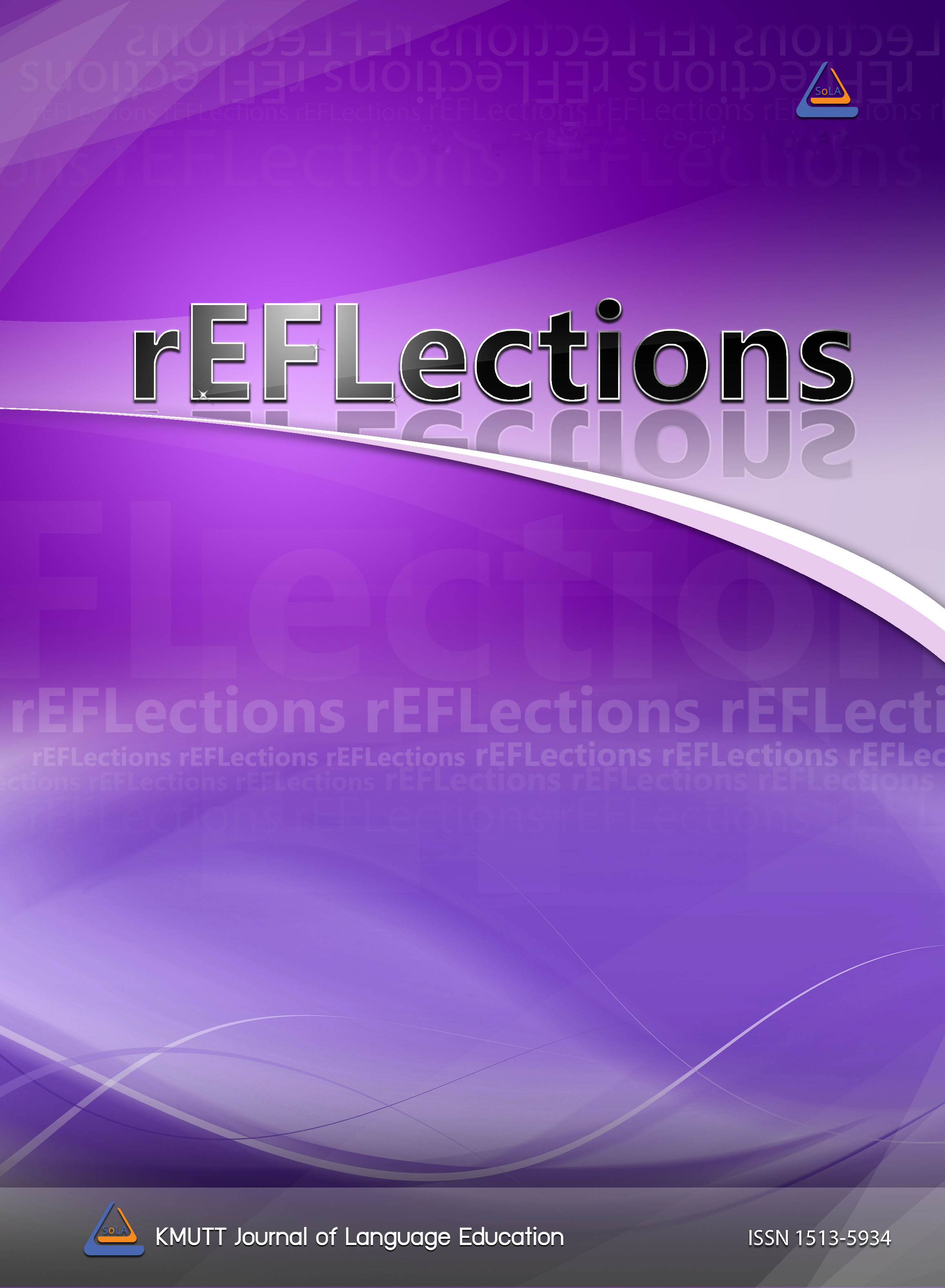The Development of an Academic Collocation List for Undergraduate Mechanical Engineering Students
Main Article Content
Abstract
Acquiring collocations is widely considered to be essential in language learning. The question arises, however, as to what collocations merit students’ and teachers’ attention in ESP classes at a tertiary level. Thus, this corpus-based study aims to systematically develop an academic collocation list for undergraduate mechanical engineering students who learn English as a foreign language. To identify such a collocation list, the current study relied on a corpus-based approach and an expert-judged approach. The Sample Corpus of Mechanical Engineering containing 2.1 million words was compiled from required and supplementary textbook chapters, reading texts and research articles as specified in the course syllabi for the undergraduate program in Mechanical Engineering at a public university in Thailand. The development of the list involved five stages: 1) compilation of materials 2) creating a specialized corpus 3) extracting high-frequency node words and identifying lexical collocations 4) expert judgement; and 5) ordering the entries. These steps are in line with those proposed by Ackermann and Chen (2013) with some modifications. It is expected that this corpus-informed collocation list consisting of 282 entries will be highly useful for students majoring in Mechanical Engineering as well as ESP teachers and material developers. The complete list of collocations is provided in the appendix.
Article Details
References
Ackermann, K., & Chen, Y. H. (2013). Developing the academic collocation list (ACL) - A corpus-driven and expertjudged approach. Journal of English for Academic Purposes, 12(4), 235–247. https://doi.org/10.1016/j.
jeap.2013.08.002
Biber, D., & Conrad, S. (1999). Lexical bundles in conversation and academic prose. In H. Hasselgard & S. Oksefjell
(Eds.), Out of corpora (pp. 181-190). Amsterdam, The Netherlands: Rodopi.
Brezina, V., & Gablasova, D. (2013). Is there a core general vocabulary? Introducing the New General Service List.
Applied Linguistics, 36(1), 1-22.
Brezina, V., Weill-Tessier, P., & McEnery, A. (2020). #LancsBox v. 5.x. [software]. Available at: http://corpora.lancs.
ac.uk/lancsbox.
Chon, Y. V., & Shin, D. (2013). A corpus-driven analysis of spoken and written academic collocations. Multimedia-
Assisted Language Learning, 16(3), 11-38.
Chung, T. M., & Nation, P. (2004). Identifying technical vocabulary. System, 32(2), 251–263. https://doi.org/10.1016/j.system.2003.11.008
Coxhead, A. (2000). A new academic word list. TESOL Quarterly, 34(2), 213-238. https://doi.org/10.2307/3587951
Durrant, P. (2009). Investigating the viability of a collocation list for students of English for Academic Purposes.
English for Specific Purposes, 28(3): 157-169.
Gardner, D., & Davies, M. (2013). A new academic vocabulary list. Applied Linguistics, 35(3), 305–327. https://doi.
org/10.1093/applin/amt015
Hunston, S. (2002). Corpora in applied linguistics. Cambridge, England: Cambridge University Press.
It-ngam, T., & Phoocharoensil, S. (2019). The development of science academic word list. Indonesian Journal of
Applied Linguistics, 8(3), 657–667. https://doi.org/10.17509/ijal.v8i3.15269
Lei, L., & Liu, D. (2018). The academic English collocation list. International Journal of Corpus Linguistics, 23(2),
–243. https://doi.org/10.1075/ijcl.16135.lei
Lewis, M. (Ed.). (2000). Teaching collocation: Further developments in the lexical approach. Boston, MA: Thomson.
McCarthy, M., & O’Dell, F. (2005). English collocations in use. Cambridge University Press.
McEnery, T., & Wilson, A. (2001). Corpus linguistics: An introduction (2nd ed). Edinburgh, Scotland: Edinburgh
University Press.
Mudraya, O. (2006). Engineering English: A lexical frequency instructional model. English for Specific Purposes,
(2), 235-256. https://doi.org/10.1016/j.esp.2005.05.002
O’Keeffe, A., & McCarthy, M. (Eds.) (2012). The Routledge Handbook of Corpus Linguistics. New York, NY: Routledge.
Thornbury, S. (2002). How to teach vocabulary. London, England: Pearson.
Toriida, M.-C. (2016). Steps for creating a specialized corpus and developing an annotated frequency-based vocabulary list, TESOL Canada Journal, 34(11), 87-105. https://doi.org/10.18806/tesl.v34i1.1257
Veenstra, J., & Sato, Y. (2018). Creating an institution-specific science and engineering academic word list for
university students. Journal of Asia TEFL, 15(1), 148–166. https://doi.org/10.18823/asiatefl.2018.15.1.10.148
Valipouri, L., & Nassaji, H. (2013). A corpus-based study of academic vocabulary in chemistry research articles.
Journal of English for Academic Purposes, 12, 248-263. https://doi.org/10.1016/j.jeap.2013.07.001
Watson Todd, R. (2017). An opaque engineering word list: Which words should a teacher focus on? English for
Specific Purposes, 45(1), 31- 39. https://doi.org/10.1016/j.esp.2016.08.003
Ward, J. (2009). A basic engineering English word list for less proficient foundation engineering undergraduates.
English for Specific Purposes, 28(3), 170–182. https://doi.org/10.1016/j.esp.2009.04.001
West, M. (1953). A general service list of English words. London, England: Longman, Green & Co.
Wudthayagorn, J., Pugsee, P., Janpugdee, P., & Limgomolvilas, S. (2020). A study of the information and communication technology word list. Pasaa Paritat Journal, 35, 145-167. Retrieved from https://www.culi.chula.ac.th/publicationsonline/home_p2.php.
Xue, G., & Nation, P. (1984). A university word list. Language Learning and Communication, 3(2), 215-219.


